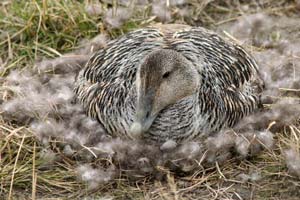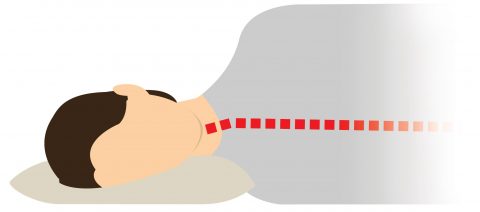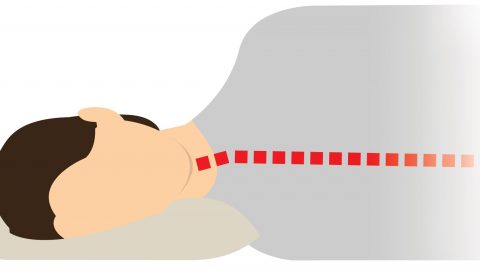
“This down pillow has ripped open and it’s so funny! My step-father, Steve, will clean up the mess when he gets home.”
Some people swear that feather and down pillows are the only way to sleep. I myself have slept on down pillows for most of my life. There’s a lot to like. They’re durable, moldable, and work reasonably well for all sleep positions.
Unfortunately feather and down pillows come with some baggage.
Cleaning can be difficult.
I have personally destroyed several down pillows and at least one comforter in the wash. I’m sure many of you have done the same. It’s quite easy to ruin things filled with feathers and down.
Thus, you have to be careful:
- Drying it too hot can scorch the fill.
- Allowing it to sit wet for too long will result in a really foul-smelling mold. Be sure not to forget them in the washer!
- Washing and drying both can cause clumping of the down clusters, which will cause your pillow to become lumpy and flat.
Proper cleaning of down and feather pillows will help them last longer, if you can do so without damaging them in the process.
Down and feathers don’t grow on trees.
That’s right, you heard it here first… down comes from ducks and geese! While you might expect humane methods for obtaining these feathers, in reality, the process likely traumatizes the birds regardless of the method.
80% of the down and feathers used in products are produced in China. The production techniques can unfortunately be grim.

Would you tear out this poor mother’s feathers?
How do people remove feathers from birds? There are three unpleasant methods:
- After slaughter for meat – This generally involves boiling the bird’s corpses in water for several minutes to loosen the feathers. People then pluck the body feathers and separate the down by hand or machine.
- Live plucking – Every six to seven weeks before slaughter, workers capture the birds, hold them down by the neck, and tear out their feathers. This process often tears the bird’s skin. Public outrage over this practice has resulted in large retailers like IKEA and Patagonia eliminating live-plucked down from their products.
- Gathering from live birds – This method involves brushing or combing the animals to extract feathers and down that are ready to fall out naturally. This is the least traumatic of the three harvesting techniques, yet abuse is still frequent in industrial production.
Those who are concerned with animals’ well-being, should be aware that purchasing many down products may result in the poor treatment of animals.
Pillow shoppers committed to their down filling AND wanting to treat birds with respect should seek products manufactured according to The Responsible Down Standard (RDS). RDS is an independent, voluntary global standard that recognizes and rewards the best practices in the harvesting of bird feathers.
 Down and feather pillows have an unfortunate tendency to flatten out as you sleep.
Down and feather pillows have an unfortunate tendency to flatten out as you sleep.
Light and fluffy is great if all you need is cuddly. However, your head and neck need proper support while you sleep to relax your muscles and align your spine in a straight line. It’s hard to get that support when your pillow turns into a pancake in the middle of the night. Down and feather pillows generally suffer from a lack of consistent support. They tend to flatten out under the weight of your head during the night causing a downward bend in your neck. They require frequent refluffing and adjustment to maintain loft and support.
Feather and down pillows retain heat.
Manufacturers frequently use feather and down filling as insulation in comforters and sleeping bags. It is terrific at keeping the warmth in and the cold out. Unfortunately that isn’t ideal in the context of pillows. Feather and down fill types retain body heat, which can make your pillow hot and uncomfortable, particularly during the summer months. The fill can restrict free air flow preventing heat from escaping. Repeatedly having to flip to the cool side of your pillow is not conducive to good sleep. By the way, that mold I mentioned… It loves the savory conditions of your sweaty down pillow!
NOTE: Contrary to a vocal (and misinformed) minority, allergic reactions to feather and down pillows are rare.
People often blame down for causing allergic reactions.It turns out that genuine feather allergies are quite rare. Dust mites or mold, both of which can thrive inside a down pillow, actually cause most reactions. Down feathers tend to become more allergenic with age – they slowly become more and more contaminated. For this reason, some recommend that down pillows be replaced as often as every 6 months. That can get pricey in a hurry!
Try this (very different) alternative to down and feather pillows…
I would have been stuck with my sad squishy down sack forever, but a friend’s recommendation led me to try a buckwheat pillow. I wasn’t an instant convert; it was very different, so it took some getting used to. But, after about a week, I was sleeping much better. I tossed out my down pillow. A year after that I was manufacturing my own buckwheat pillows. Yes – I love them that much! Don’t take my word for it. Our customer’s reviews speak for themselves! I love this testimonial from a feather pillow convert:
“As far back as I can remember using a pillow at night, I’ve used a feather pillow. Pillows stuffed with the softest down have been my default, my go to. I haughtily looked down on pillows of any other type. This was even though I’d been growing more dissatisfied with my feather pillow’s tendency to wake me in the middle of the night because it’s lofty support had degraded and squished away through after a few hours…
The first week was difficult. I was so used to the soft, plushness of feather pillows: the buckwheat pillow felt like a slab of concrete in comparison. But, then the second week hit. By then, my muscles were well adjusted. The pillow start to feel supportive rather than hard. I was a convert! This pillow is great. It excels at all-night-long support and good breathability. Unlike my feather pillows of the past, this pillow works with/for me, rather than against me. What a fantastic pillow!” –Geoff, verified Hullo customer
Looking for other alternatives to down and feather pillows? Check out our guide to types of pillows available.





